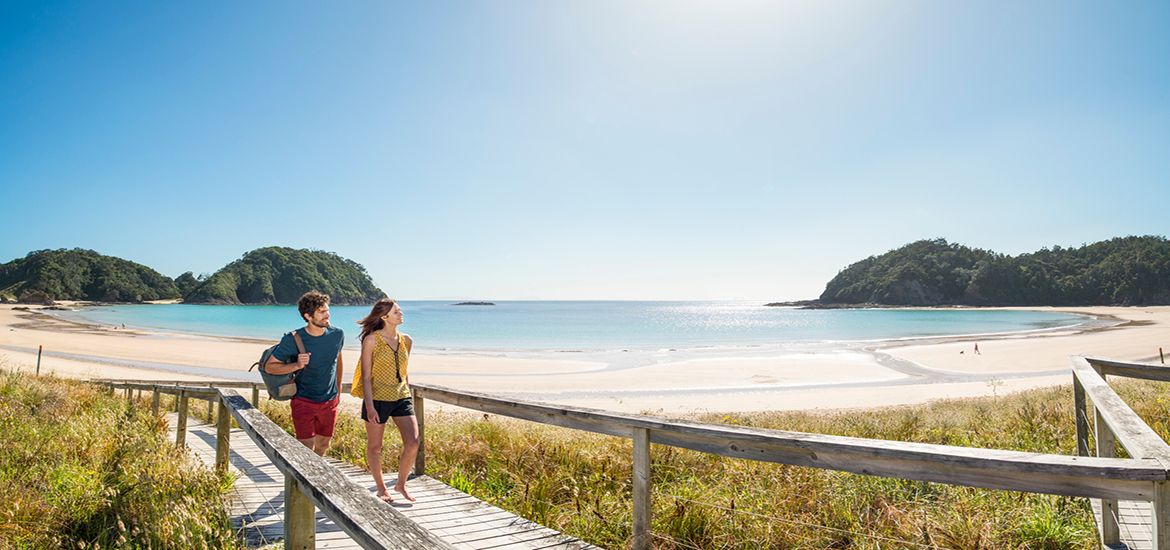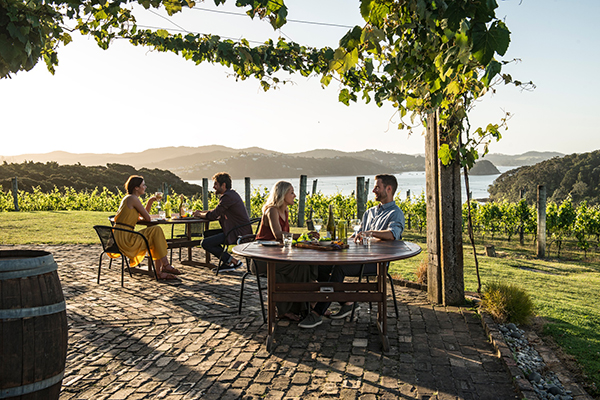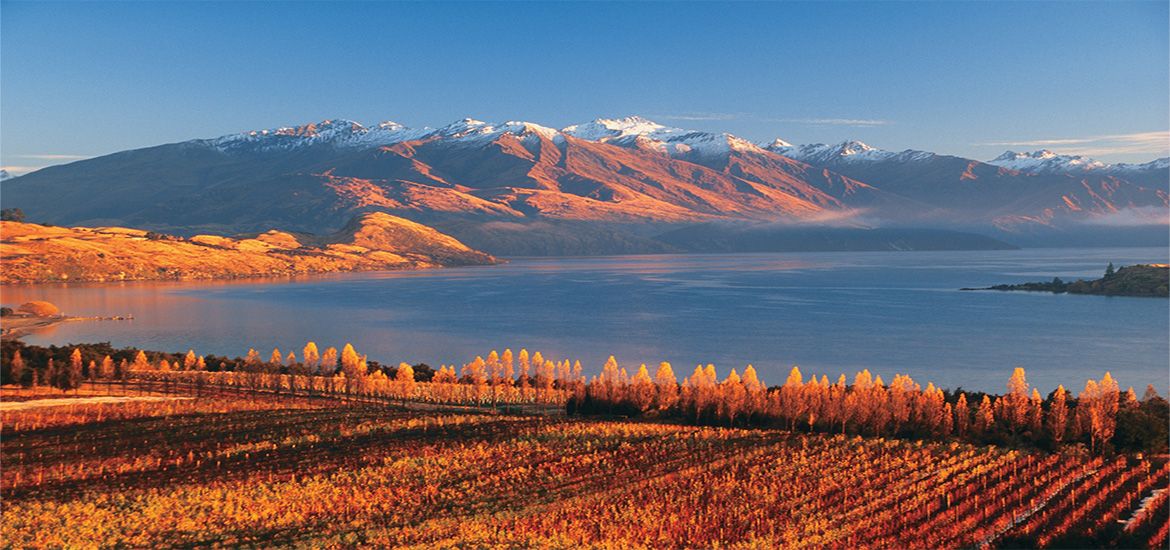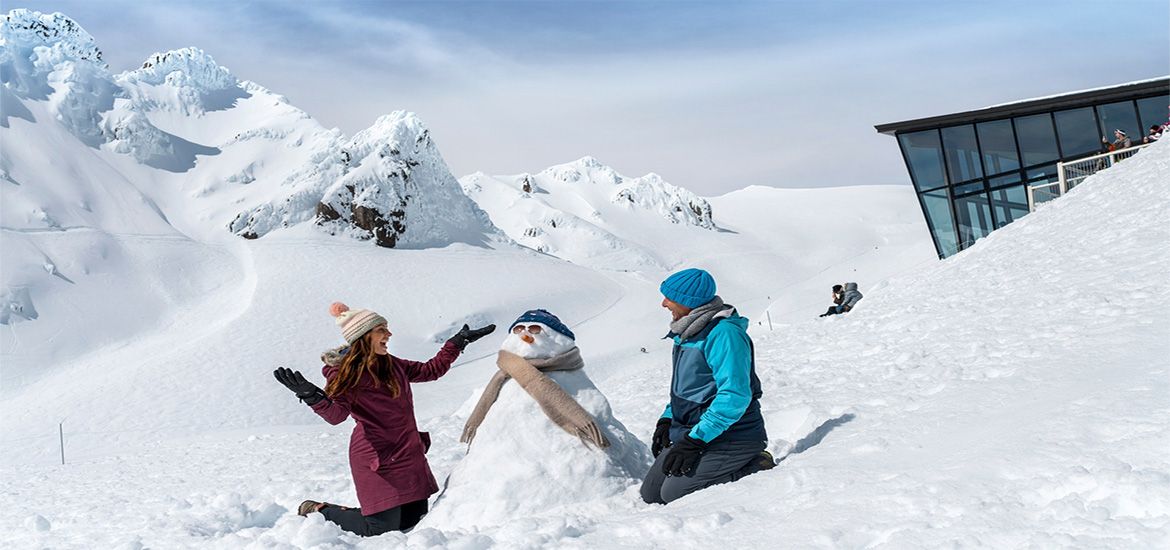
You might wonder when is the best time of year to visit New Zealand. The short answer is, well, any time of year! However, it depends a little on what your interests are to decide what's the best time to visit New Zealand for yourself.
New Zealand has very distinct weather seasons, which means some activities may be off limits during certain times of the year. Other periods might also be busier, so let's check out all of these variables in this guide here, and they might eventually help you decide when you should visit New Zealand.
Apart from having four different weather seasons, New Zealand's travel seasons can be split threeways. Let's check them out.
Peak summer months : Dec-Jan-Feb-Mar
The peak summer months are from December right through until January and is by far the busiest time of year. The country is filled with overseas tourists and many Kiwis are on their summer holidays. If you can, it's best to avoid traveling around the Christmas and New Year's break, as the increasingly growing number of tourists has started to put pressure on accommodation facilities at that time of year. You should be prepared to book well in advance to find your preferred choice of accommodation during this period. The months February and March are in fact even better, as weather is most stable then and the summer school holidays are finished.
The summer months are perfectly suited to enjoy the stunning New Zealand great outdoors. Whether you like to go hiking, camping, kayaking or any other adventure activity, the weather is generally stable at this time of year, and the days are quite long as it stays light until around 10pm.
But also for the less energetic people, summer is also the best time to enjoy the beautiful beaches around New Zealand, the food is freshest and seafood is abundant, festivals are in full swing, and it doesn't rain often, though there are exceptions.
The average daytime temperatures around this time of year lies around 25 degrees Celcius (77 F) on the North Island, and around 22 degrees Celcius on the South Island. Generally the further north you go , the hotter and more humid, and the further South you go, cooler and drier. And even though that may not appear very hot, don't underestimate the New Zealand sun, which can be extremely intense. So it is good advice to wear sunhat, sunglasses and slip, slop and slap on that sunscreen!
If you plan to spend time in the mountains during the summer in New Zealand, always be prepared for changeable alpine weather conditions.

Shoulder season : Oct-Nov-Apr-May
The shoulder seasons are typically mid to late spring and early autumn. Each of these two periods does have different type of weather, which is something to take into consideration. Early spring is generally still a bit cool, and the weather is quite fickle with some windy days and unsettled weather. Kiwis call this season "the silly season". This improves however going into November when it starts warming up, and everything starts to grow again.
Spring is an awesome time to see dramatic landscapes with all the various fresh spring colors and odours, while still seeing snow on the mountain tops. This makes it a better travel season for photography. The scenery in the Fiordland and West Coast regions is at its best during this time of year. The October and November months are also the cultural highlight months of the year, with a number of events highlighting heritage and arts, such as the Auckland Heritage festival, Akaroa French Festival, and many more...
During autumn the weather is more calm and settled and it is still relatively warm, and ocean temperatures are also still warm. The days start to get a little shorter, but stay mild during the evenings. Central Otago is very picturesque in autumn with the golden leaves making an impression to any traveller. As the oceans are calm, autumn is also the best time to participate in any marine activities and marine wildlife spotting.
During the shoulder seasons you'll avoid most crowds and it is quieter on the New Zealand roads and in the towns, making it an excellent time as well for a New Zealand road trip on a self drive tour or in a rental motorhome.
Temperatures during this time of year can range between 5-25 degrees, depending on location. It is generally advised to bring layered clothing for this time of year.

Winter season : Jun-Jul-Aug-Sept
You might be wondering is visiting New Zealand in winter worth it?
Well it certainly is! New Zealand winters are relatively mild compared with many other places in the world, having to endure long and cold winters. This is not true for New Zealand. Yes it snows in New Zealand. But it only snows in certain locations, and it shouldn't be hard to guess where. The Southern Alps mountain range that stretches along the spine of the South Island are in fact larger than the whole European Alps, with a number of peaks higher than 3000m in altitude. So it should come to no surprise you'll find snow during winter, and in fact there can be lots of it.
This means that if you are a snow sports fan, New Zealand is a fantastic destination to visit in winter. There are numerous excellent ski-fields across the entire South Island such as Mt Hutt ski-field in Canterbury, Coronet Peak around Queenstown, Cardrona and Treble Cone around Wanaka, and many more... The largest ski field however lies on the North Island in the Central Plateau. New Zealand's largest active volcanoe, Mt Ruapehu, is also home to New Zealand's largest ski field, and ski revellers from all across the North Island drive to "the mountain" during the winter weekends for some skiing or snowboarding.
Winter is also a perfect time for relaxation in some of the country's renowned hot pools and polynesian spas. The geothermal regions of Rotorua and Taupo in the North Island are great locations with natural hot pools and polynesian spas, where at the same time you can sample the unique Maori Culture. and the hot pools at Hanmer Springs and Lake Tekapo provide for some surreal stargazing on clear and crisp winter nights. And what better way to enjoy this while sampling some of New Zealand's world class wine.
One thing to bear in mind during the winter months though is that there may be occasional road closures due to snowfall on the higher roads or passes or heavy rainfall, so travel times can be slow. Days are also quite short, so if you are traveling around the country do take this into consideration when planning your New Zealand itinerary.
Temperatures are obviously the coldest in winter, and range from about 1-16 degrees Celcius. However it varies a lot depending on where you are in the country. While you may encounter regular snow in the South Island, the "Winterless North" region of Northland can often still reach temperatures up to 17 degrees celcius on a warm day.

So when is the best time to visit New Zealand? Truth is New Zealand is a year-round holiday destination and caters for every type of traveler, regardless the season, so New Zealand is your oyster! Just come and sample it!
